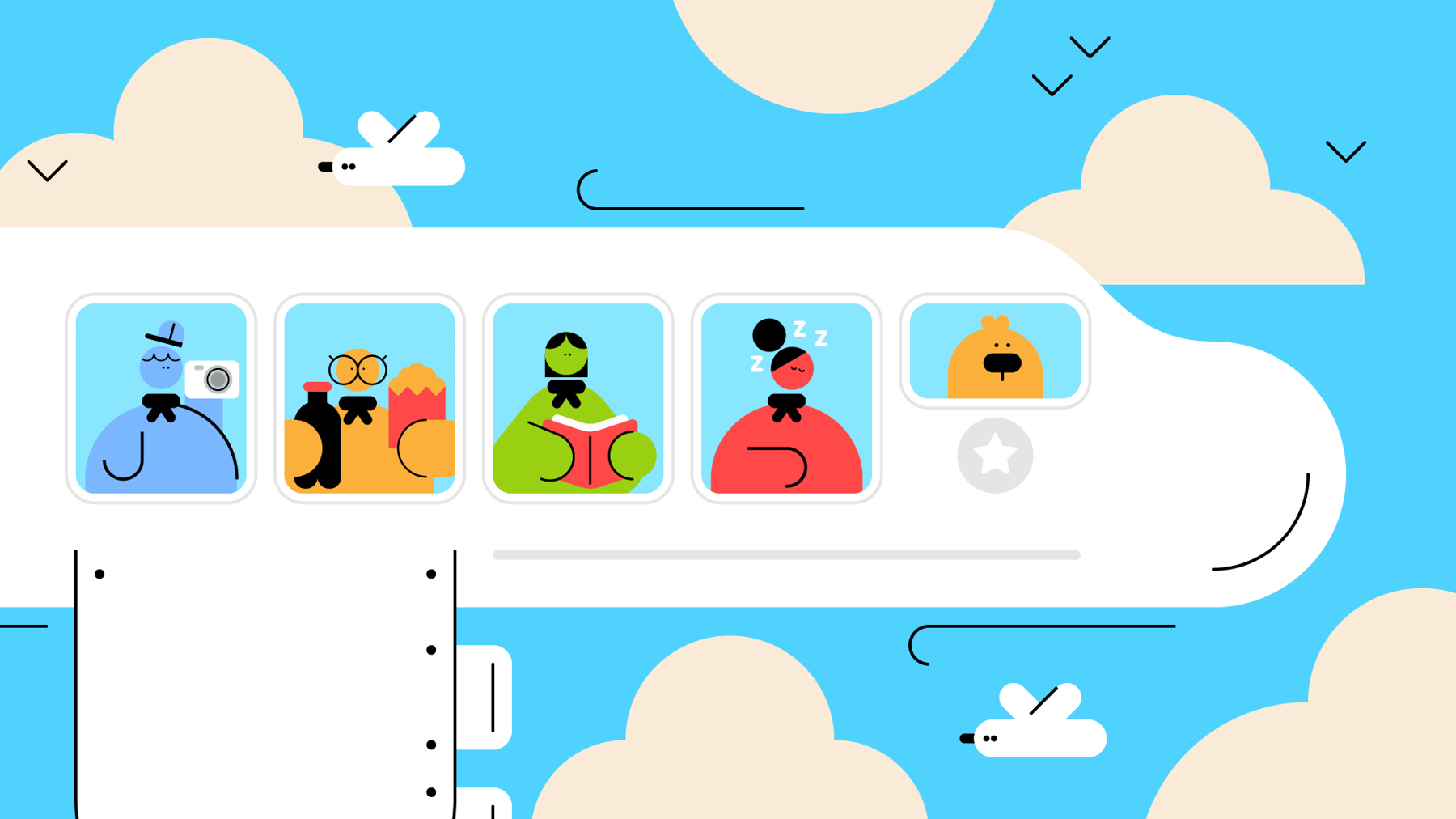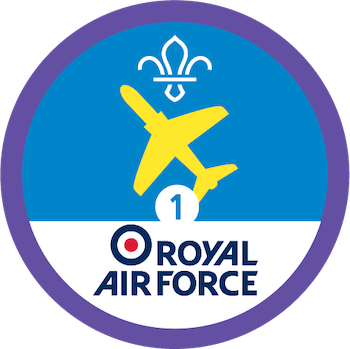
Up, up and away
You’ll need
- Chairs
- Masking tape
- Chalk
- Someone who has flown in an aircraft

Before you begin
- Find someone who has flown in an aircraft to be the storyteller. The storyteller could be a member of the group, a parent or carer, or anyone else the group knows.
- Ask the storyteller to think about the journey they took, so they’re ready to share it with everyone. Where did they go? What was it like?
- Use tape or chairs to mark the shape of the aircraft in your meeting place. Was it a circular hot air balloon? Was it a long rectangular aeroplane with two wings?
Take off
- The storyteller should welcome everybody to the aircraft, and tell them where to sit and where to put any (pretend) bags they have.
- Everyone should take their seats and listen carefully for any announcements.
- The storyteller should sit in the pilot’s seat, and let everyone know where they’ll be flying to today. Why do you think people might fly there?
- The storyteller should give everyone a safety briefing – this doesn’t need to be exactly accurate, as long as it covers the basics like seatbelts and emergency exits.
- Everyone should fasten their pretend seatbelts, and prepare for take-off.
- Everyone should join together to make the noise of an aeroplane taking off, and lean back in their seats as though their plane was climbing through the air.
In flight
- Now the plane is cruising, people can take off their seatbelts if they want to.
- The storyteller should tell everyone what it feels like to fly, and what you can see out of the windows. Everyone should pretend to look out – what can they see? Are they flying over, towns and cities, fields, mountains, or the sea? How does it feel to be so high up? Is it a cloudy day? Are they above or inside any clouds?
- The storyteller should tell everyone about other things that happened on their journey – were there inflight meals, snacks, magazines to read, or air stewards selling things like perfume and toys?
- If they want to, the storyteller could tell everyone how turbulence feels. Did they have any bumpy patches on their flight? If they did, everyone should move in their seats as though it’s a bumpy ride. The storyteller might need to tell everyone to put their seatbelts back on.
Landing
- When it’s nearly time to land, the storyteller should let everyone know so they have a chance to put away any luggage, and put their seatbelts on.
- Everyone should make the noise of an aeroplane, and move their bodies forward a little as they land. Is there a big bump when the wheels touch down? How long does it take to slow down and come to a stop?
- The storyteller should tell everyone when they can take their seatbelts off, and exit the aircraft.
- If anyone has any more questions for the storyteller, they should ask them now.
Reflection
This activity was a chance to try new things. Have you ever flown in an aircraft before? If you did, how did you feel before? Was it how you expected it to be? How did you feel afterwards? If you didn’t, would you like to? Do you feel more confident about the idea now you have an idea of what to expect? Is it easier to try new things if you can practice first, or if you can ask questions about what it will be like? If you could fly anywhere, where would you go? If you could choose any type of aircraft, what would you fly in?
This activity also let you communicate. Was it easy to listen to the storyteller, even when things were getting exciting? How did you all show the storyteller you were listening, and appreciated them telling you their story? Did you understand the storyteller? Did you ask any questions? How did people let the storyteller know they had questions? When did they ask their questions? Did the storyteller understand what they were asking, or did they need to have a chat for it to be clearer?
Safety
All activities must be safely managed. You must complete a thorough risk assessment and take appropriate steps to reduce risk. Use the safety checklist to help you plan and risk assess your activity. Always get approval for the activity, and have suitable supervision and an InTouch process.
- Food
Remember to check for allergies, eating problems, fasting or dietary requirements and adjust the recipe as needed. Make sure you’ve suitable areas for storing and preparing food and avoid cross contamination of different foods. Take a look at our guidance on food safety and hygiene.
- The storyteller could have flown in any type of aircraft – their story (and everyone’s actions) will be different if they flew in a hot air balloon or helicopter than if they flew in a big aeroplane. You may need to mark out several smaller aircraft, and split everyone into groups.
- Everyone could make a model aircraft before they do this activity. This could be made from cardboard.
- If you can’t find anyone who’s flown in an aircraft, see if you can find a video or interview online, or ask a local aerodrome or airport if anyone is able to help.
- People could play other roles, for example, air stewards. You could add in any extra details you like, for example asking people to bring luggage, serving real snacks, or playing or learning a full safety briefing.
- Some people might struggle to imagine this activity. You could watch some videos together first, explain what will happen, and remind them to ask questions if they need to.
- If anyone doesn’t like loud noises, remind everyone to make aeroplane noises quietly, or skip the noises involved. You could always describe them instead.
All Scout activities should be inclusive and accessible.
